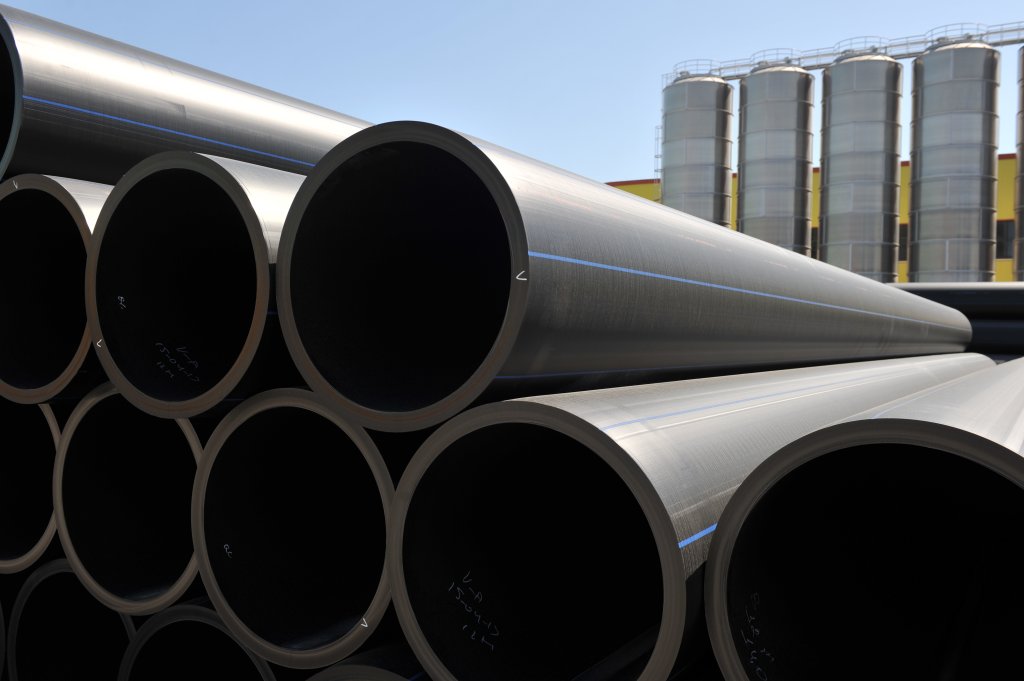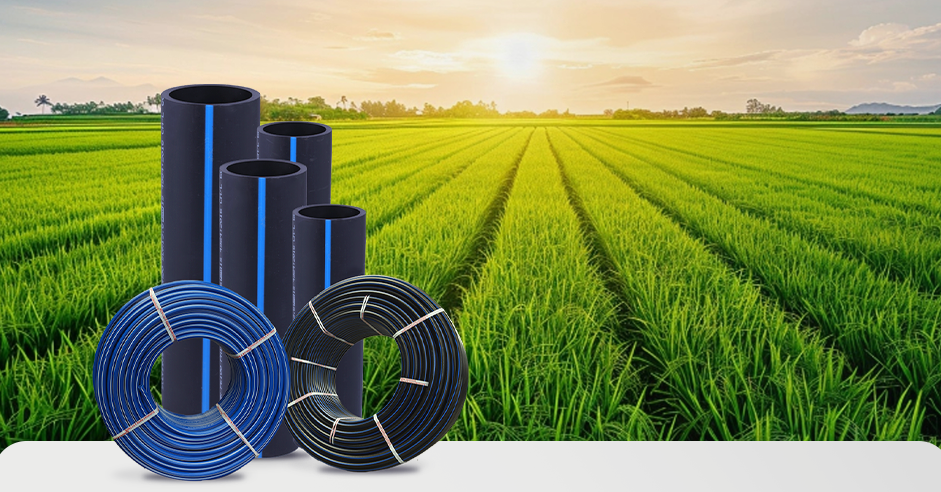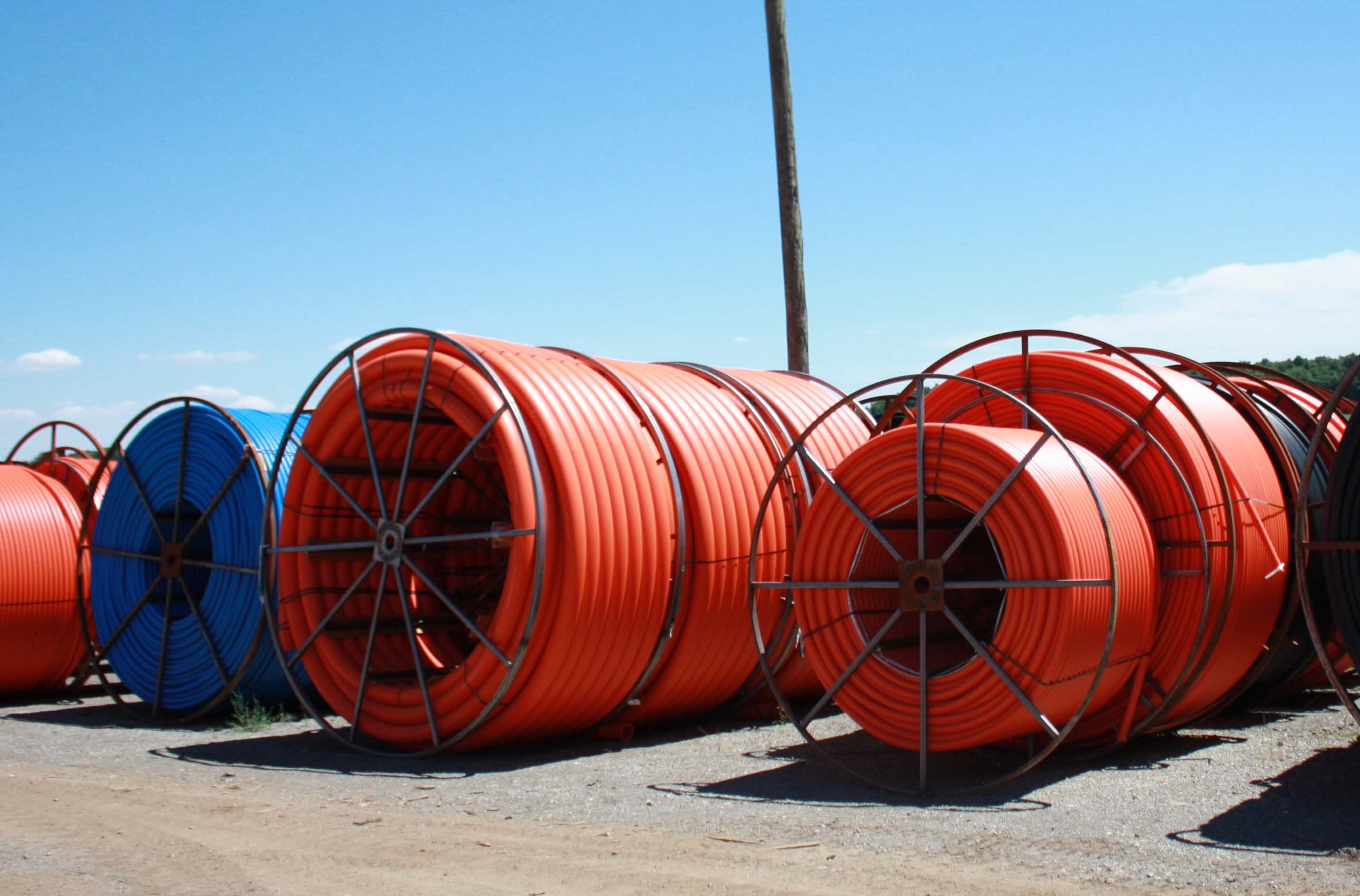Where Contractors Can Get Midland TX HDPE Pipe Fittings in Stock for Oilfield Applications
Discover the Manufacturing Process Behind High-Quality HDPE Pipeline and Its Applications
The production process of high-grade HDPE pipelines is detailed and systematic. It starts with the choice of basic materials that improve performance. Following this, ethylene undertakes polymerization to create material, which is after that shaped with extrusion. Quality assurance is paramount, making sure that the end product satisfies rigorous standards. The trip of HDPE pipelines does not finish with manufacturing. Their applications throughout numerous sectors disclose a wider value worth analyzing.
Understanding HDPE: Residences and Advantages

High-density polyethylene (HDPE) is a flexible polycarbonate recognized for its durability and resistance to numerous ecological factors. This material exhibits outstanding tensile strength, making it suitable for requiring applications. Its low-density structure adds to a light-weight product, promoting simplicity of dealing with and setup. HDPE also showcases exceptional resistance to chemicals, which lessens deterioration when exposed to extreme materials.
The product's low dampness absorption better improves its longevity, making it perfect for use in pipelines and tank. Additionally, HDPE is immune to ultraviolet (UV) radiation, making certain that items maintain their integrity even when exposed to sunshine. Its flexibility permits for the development of intricate forms without endangering toughness. The eco-friendly nature of HDPE, frequently originated from recycled products, includes in its allure, advertising lasting techniques in manufacturing. Overall, these buildings and advantages make HDPE a favored selection for various industrial and customer applications.
Resources Choice for HDPE Manufacturing
The choice of resources for HDPE manufacturing is vital to confirm the final item fulfills the desired requirements and quality requirements. High-density polyethylene (HDPE) is largely generated from polymerized ethylene, stemmed from fossil fuels such as gas or unrefined oil. The top quality of these feedstocks substantially influences the mechanical and thermal residential or commercial properties of the last HDPE.
Additives also play a considerable duty in enhancing HDPE's efficiency, consisting of antioxidants, UV stabilizers, and colorants, which enhance longevity and resistance to ecological factors. The choice procedure must think about not just the chemical make-up of the raw materials but also their processing qualities to assure effective production.
The sourcing of raw materials must focus on sustainability and conformity with ecological regulations, as liable methods are vital in today's market. Ultimately, cautious resources selection lays the foundation for creating high-grade HDPE pipelines ideal for diverse applications.
The Extrusion Process: Shaping HDPE Pipe
The extrusion process plays a crucial duty in forming HDPE pipelines, beginning with meticulous product preparation methods that guarantee excellent flow and uniformity. Similarly important is the style of the die, which straight affects the final measurements and surface quality of the pipe. Together, these aspects add greatly to the efficiency and quality of HDPE pipeline manufacturing.
Product Prep Work Strategies
Effective manufacturing of HDPE pipes begins with careful product prep work techniques, specifically the extrusion process. During this stage, high-density polyethylene material is initial dried to get rid of wetness, making sure optimal circulation features. The resin is then fed right into the extruder, where it goes through home heating and melting, transforming into a thick state. This heating process is very carefully controlled to keep the product's stability and performance. The molten HDPE is forced through a die, shaping it into a constant pipeline type. Correct temperature administration during extrusion is important, as it straight impacts the product's buildings and the end product top quality. When formed, the HDPE pipe is cooled down and cut to defined sizes, all set for succeeding handling and applications.
Die Style Significance
Accuracy in die layout plays an important function in the extrusion procedure of HDPE pipelines. The die functions as the final shaping device, directly affecting the pipe's dimensions, wall surface density, and surface area finish. A properly designed die assurances uniform product circulation, decreasing flaws such as abnormalities and vulnerable points. The geometry of the die should more info be maximized to suit the particular buildings of HDPE, including its viscosity and thermal behavior throughout extrusion. Additionally, the cooling price of the material as it passes through the die can considerably impact the pipeline's structural integrity. As a result, investing in advanced die modern technology is important for manufacturers intending to produce high-quality HDPE pipelines that fulfill industry standards and customer expectations.
Quality Assurance Procedures in HDPE Manufacturing
Although numerous elements influence the quality of HDPE pipe production, reliable high quality control procedures are important to ensure consistency and reliability in the last item. Trick quality assurance techniques include rigorous material assessment, validating that the raw polyethylene meets recognized requirements for purity and density. Throughout the extrusion process, criteria such as temperature, stress, and cooling time are very closely kept track of to preserve dimensional accuracy and architectural honesty
Furthermore, post-production testing is essential; manufacturers commonly perform hydrostatic tests to analyze the pipe's strength and resistance to pressure. Aesthetic examinations for surface issues further improve quality guarantee. Qualification from relevant requirements organizations, like ASTM or ISO, provides an added layer of reliability. By executing these extensive high quality control procedures, manufacturers can decrease problems, enhance efficiency, and guarantee that the HDPE pipes meet the specific demands of different applications, ultimately resulting in customer fulfillment and rely on the item.
Applications of HDPE Pipe Throughout Industries
HDPE pipes are utilized across different industries due to their toughness and versatility. In water circulation systems, they assure effective shipment, while in wastewater administration, they provide trusted options for waste transport. Additionally, agricultural irrigation networks gain from HDPE's resistance to rust and versatility, making it a suitable option for modern-day farming practices.

Water Distribution Equipments
A considerable number of sectors count on high-density polyethylene (HDPE) pipelines for effective water distribution systems. Known for their toughness and resistance to corrosion, HDPE pipelines are widely made use of in municipal water system networks, farming irrigation, and industrial applications. Their light-weight nature promotes easy handling and installment, lowering labor expenses and time. In addition, HDPE pipelines can accommodate numerous stress levels, making them suitable for both low and high-pressure systems. custom hdpe pipe manufacturing Midland TX. The adaptability of the product enables seamless integration right into existing framework, decreasing the requirement for considerable excavation. HDPE's resistance to chemical leaching warranties that the water provided stays risk-free and tidy, making it a suitable choice for maintaining the quality of safe and clean water across numerous fields.
Wastewater Monitoring Solutions
Efficient water distribution systems additionally lead the way for innovative wastewater monitoring remedies, where high-density polyethylene (HDPE) pipes play a substantial duty. Distinguished for their toughness and resistance to deterioration, HDPE pipelines are excellent for carrying wastewater in various settings. Their adaptability enables easy installation in complex atmospheres, reducing the need for considerable excavation. Furthermore, HDPE's smooth interior surface minimizes rubbing, boosting circulation rates and efficiency. These pipes are additionally immune to chemical leaching, making certain that contaminants do not jeopardize the surrounding atmosphere. Industries, towns, and therapy centers progressively depend on HDPE pipelines for their integrity and durability, making them a preferred choice for modern wastewater management systems. This versatility emphasizes the important value of HDPE pipes throughout countless applications.
Agricultural Watering Networks
Agricultural irrigation networks benefit greatly from making use of high-density polyethylene (HDPE) pipelines, which offer effective and reputable water distribution to plants. HDPE pipes are lightweight, making them simple to move and mount, while their adaptability permits various arrangements in diverse surfaces. These pipelines show exceptional resistance to deterioration, chemicals, and UV radiation, making certain durability in rough agricultural environments. In addition, their smooth interior surface reduces rubbing loss, enhancing water circulation and reducing energy prices connected with pumping. The longevity of HDPE pipes, usually surpassing 50 years, adds to lower maintenance and substitute costs. Farmers increasingly count on HDPE pipes to improve irrigation effectiveness and advertise lasting farming methods, inevitably leading to enhanced crop returns and source preservation.

Future Fads in HDPE Pipe Modern Technology
As the need for sustainable and efficient facilities expands, improvements in HDPE pipeline modern technology are poised to transform different industries. Arising fads include the combination of wise technologies, such as sensors and IoT capacities, which help with real-time tracking of pipeline conditions, lowering upkeep costs and preventing leakages. In addition, the development of sophisticated manufacturing methods, such as 3D printing, is making it possible for the manufacturing of complex, customized pipe styles that deal with certain project needs.
The emphasis on recycling and round economic situation methods is driving the development of HDPE pipes made from recycled materials, boosting sustainability. Enhanced jointing methods, such as electro-fusion and mechanical installations, are additionally boosting installation efficiency and reliability. The growing focus on ecological laws is pushing producers to adopt greener manufacturing processes, guaranteeing that HDPE pipes not just meet sector requirements but likewise foster a more sustainable future for framework advancement.
Regularly Asked Questions
How Does HDPE Contrast to Various Other Plastic Products?
HDPE outshines lots of other plastic products concerning toughness, chemical resistance, and flexibility. Its reduced density and high tensile stamina make it suitable for different applications, usually surpassing choices in both efficiency and longevity.
What Are the Ecological Effects of HDPE Production?
The environmental effects of HDPE production consist of greenhouse gas discharges, power consumption, and possible air pollution from making processes. Additionally, inappropriate disposal can lead to soil and water contamination, elevating concerns about long-lasting eco-friendly effects.
Can HDPE Pipeline Be Reused?
Yes, HDPE pipes can be reused. Lots of centers approve made use of HDPE for handling, changing it right into brand-new products. This recycling adds to sustainability efforts, lowering plastic waste while preserving sources and energy in the production cycle.
What Is the Lifespan of HDPE Pipeline?

Just How Do Temperature Variants Affect HDPE Pipe Performance?
Temperature variations significantly influence HDPE pipeline efficiency, impacting adaptability and stamina. Heats can bring about softening, while reduced temperature levels might cause brittleness, ultimately influencing the pipe's durability and viability for various applications in diverse environments.